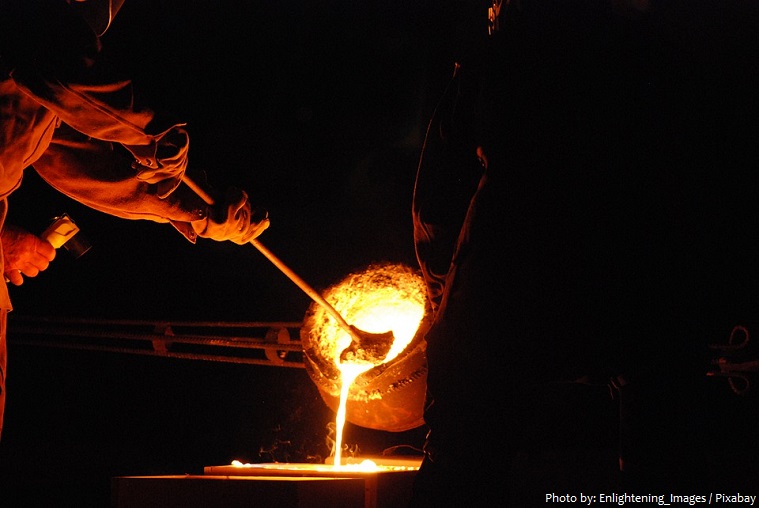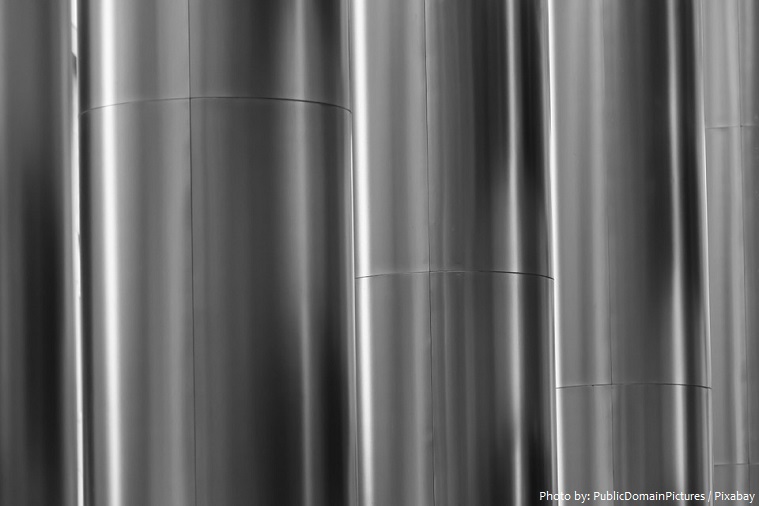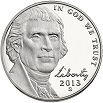Nickel is a chemical element with the symbol Ni and atomic number 28.
It is a silvery white metal with a slight golden tinge.
Nickel is hard, malleable, and ductile metal.
It is markedly resistant to oxidation and corrosion.
Nickel has high electrical and thermal conductivity.
The melting point of nickel is 1455 °C (2651 °F).
Twice as abundant as copper, nickel constitutes about 0.007 percent of Earth’s crust.
However, pure native nickel is found in Earth’s crust only in tiny amounts, usually in ultramafic rocks, and in the interiors of larger nickel–iron meteorites that were not exposed to oxygen when outside Earth’s atmosphere.
The name comes from the German word Kupfernickel, meaning “Old Nick’s copper,” a term used by German miners. They tried to remove copper from an ore that looked like copper ore, but they were unsuccessful. Instead of copper, they got slag, a useless mass of earthy material. The miners believed the devil (“Old Nick”) was playing a trick on them. So they called the fake copper ore Old Nick’s copper.
Since then, nickel has become a very valuable metal. The most common use is in the production of stainless steel, a strong material that does not rust easily.
Nickel has been widely used in coins, though its rising price has led to some replacement with cheaper metals in recent years.
It is used in hundreds of industrial and consumer applications. Nickel is also used in the manufacture of many other alloys.
Use of nickel (as a natural meteoric nickel–iron alloy) has been traced as far back as 3500 BC.
Swedish mineralogist Axel Fredrik Cronstedt was the first person to realize that nickel was a new element. In 1751, he was given a new mineral from a cobalt mine near the town of Hälgsingland, Sweden. While Cronstedt thought the ore might contain cobalt or copper, his tests produced a surprising result. He found something in the mineral that did not act like cobalt, copper, or any other known element. Cronstedt announced that he had found a new element.
In the 19th century, nickel came to prominence in plating and in alloys such as “nickel silver” (German silver) in which it is alloyed with copper and zinc. This alloy was named for its color and does not contain any silver!
Russia has about 40% of the world’s known resources at the massive Norilsk deposit in Siberia.
Also, large known resources are in the Sudbury region of Ontario, Canada. It is believed that this large deposit of nickel ore is a result of an ancient meteor impact.
Many experts believe that the Earth’s core consists almost entirely of iron and nickel.
Nickel is only one of three naturally occurring elements that is strongly magnetic. The other two are iron and cobalt.
Adding nickel to glass gives it a green color.
A nickel, in American usage, is a five-cent coin struck by the United States Mint. Composed of 75% copper and 25% nickel, the piece has been issued since 1866.
Coins of nearly pure nickel were first used in 1881 in Switzerland.
In the human body, nickel is required for optimal growth, healthy skin, bone structure. It plays a role in the creation of red blood cells. It is necessary in the metabolism of sugars, fats, hormones and cell membranes.
Nickel is found in several foods including nuts, dried beans and peas, soybeans, grains, and chocolate.






